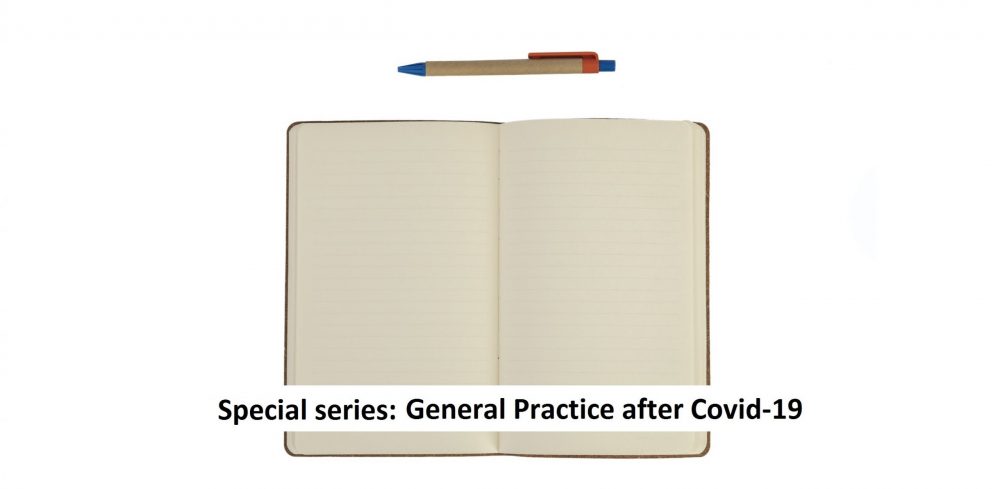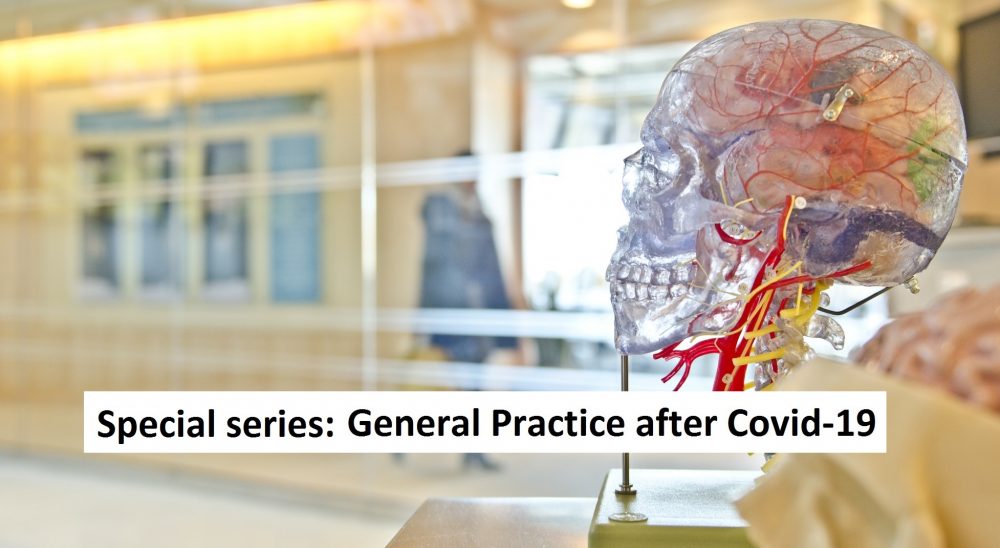
New Patient Check
Most practices have a standardised protocol for registering new patients, with most having a system for logging in the basic details such as ethnicity and lifestyle data as a baseline.1 There is also the NHS Public Health England Health Check template also for over 40-year olds. This is usually done by a member of the administrative or nursing team members.2
What is the ‘Bonding Consultation’?
The ‘New Patient- Bonding Consultation’ (NP-BC) extends beyond a simple new patient registration checklist as I learnt on my first day of working with Dr V, a senior single-handed GP with over 50 years of experience in the NHS.3 At his practice, this first interaction between the doctor-patient was key, and the ‘bonding’ aspect acted as the foundation to their working relationship.
The meticulous history taking in an orderly way incorporated the standard topics of the past medical, drug and family history. However, in this ‘NP-BC’ this Dr V explored areas of safeguarding, mental health and any relevant screening. Momentarily, I had flashbacks of my medical school lectures on history taking and wondered whether this was now a nostalgic memory as I did not routinely take such a history. This made me curious about why I had stopped doing these first taught principles in my medical studies, and the typical suspects such as limited time, work load and pressured targets came up.
“My specialty is ‘family based general practice’ – from myself, staff to the patients of the community I serve.”
Over time I started to value the information from this scanned one page Lloyd-George NP-BC. The baseline information proved helpful in many situations from making clinical comparisons of baseline height / weight parameters, to knowing the family history when making a referral, or for seeing when their last cervical cytology screening was. Unknowingly I found myself referring to this document more and more, which not only made getting relevant information easier, but it made me more informed about my patients. This was the single factor that had the biggest impact on me; the patients felt I knew them, and that proved incredibly powerful in building rapport and understanding them. Maybe as GPs we should know our patients better. In my experience thus far I struggle to ensure continuity, and often due to time constraints or service issues feel unable to get the global picture of my patient’s lives. In contrast, Dr V knows most of his patients and their families, and I feel this does make him a better GP. His patients were initially disappointed on learning that they would be seeing me and not him! I got used to the disappointing faces, but this encouraged me to try and mirror his working style – and it was a simple one, listen to your patients.
His working style …. was a simple one, listen to your patients.
What are the advantages of the ‘Bonding Consultation’?
The NP-BC is arranged by the administrative team on when the patient registers. Historically this was done face to face with Dr V, but due to coronavirus it has been converted to a video consultation as there is something ‘personifying’ about seeing and hearing each other. I have observed many advantages of the NP-BC:
• Dr V has a comparatively lower rate of prescribing and referrals compared to the CCG average, and after much observation I feel that this is because he works closely with his patients from the very first NP-BC where he starts with positive health promotion.
• The patients see him as their ‘family GP’. It has been typical for him to have been the doctor who did their childhood immunisations, to then doing their postnatal check. This life cycle of care is what underpins general practice and is a unique feature of primary care. There is something special about being a part of your patients’ journeys.
• It can highlight red flags such as safeguarding issues (questions on domestic violence, female genital mutilation, social services involvement) and mental health concerns. In our community mental health can still be taboo so we find it more important to ensure that we are able to explore this in a sensitive but open way. Anecdotally, I have had a few instances when doing the NP-BC where the patient has been surprised by me asking ‘how are you feeling in yourself’ or ‘how would you describe your mental health’? I would hope more patients are being asked these simple but revealing questions because mental health remains stigmatised in certain communities.
• There is early detection of conditions following the NP-BC as baseline investigations are decided at the end. Usually bloods and where applicable urine ACR. Incidental findings of diabetes, hyperlipidaemia, abnormal liver function and hypertension in asymptomatic patients is quite common. The early identification allows for better health outcomes and ultimately reducing the chronic disease burden.
• There is a high uptake in immunisations and screening because the NP-BC has an entire section on discussing the applicable programmes and engaging the patients into them. Our local area is quite dynamic with a moving population, and often patients from abroad have never had any cervical or breast screening so this becomes a positive health promotion opportunity.
• It allows for professional curiosity and this can sometimes be instrumental in piecing together different parts of the puzzle. This initial background information can help us later – for example on NP-BC Patient X stated alcohol consumption 30units/week, and was signposted to the local alcohol service. A few months later we receive a letter from the emergency department that the patient attended with low mood and left without an assessment. This prompted a pro-active action from us, engaging the patient with the local alcohol and mental health team.
• It enables me to be a better advocate for my patients, as being inquisitive about them and their lives equips me to deliver holistic care. It is helpful in setting and managing doctor patient expectations and goal setting.
• A large part of our job is communicating, and through the NP-BC I have appreciated how there is still the medical student in me that tries to make the patient feel comfortable by smiling, sometimes making a joke and still feeling moved when a patient says thank you or tells me about their pet dog in their social history. We are specialists in harnessing this relationship with our patients where they can simply tell us anything, and what a privilege that is – it is not easy to share your life story.
We are specialists in harnessing this relationship with our patients.
There are perils to everything. Time is a major limiting factor in general practice. As much I was in full support of adopting the NP-BC into my daily practice, I did worry about how long it would take. By creating an Emis template with pre-populated questions we have made an efficient electronic way of doing the NP-BC which allows the data to be Read coded and easily accessible. This new template would allow that information to be transferred through to wherever the patient would move in the future, allowing the next team to have that vital information about them, minimising the continuity gap. On average it takes about 15-30 minutes, but this time is the biggest investment in my patients. They feel valued and cared for. This does not necessarily have to be done by a doctor, a nurse could do this making it feasible to incorporate into routine practice.
Conclusion
The general practice I qualified into is exciting and rewarding, but very different to Dr V’s. I have rarely done a new patient health check, and most of my consultations are for ‘new problems’ and often I do not know the patient. I was keen to incorporate this senior GP’s wisdom into my practice as I experienced first-hand the better health outcomes for patients, and this is what is important to us both, despite the 50 years between us. The NP-BC is not simply a tick box exercise on registering new patients, but it is a holistic opportunity to get to know our patients, their expectations and concerns. This ‘bonding’ exercise is fundamental to general practice as we do have a symbiotic relationship with our patients and the communities that we serve. It further improves connectivity between the surgery and patients, which also boosts patient perception and engagement, which is reflective in our high uptake of immunisation and screening, and low rate of DNAs.
Patient centred care will be my priority.
Despite increasing demands and challenges we must ensure that we preserve these ‘old traditions’ and that they are integrated into our modernising and ever-growing speciality which still aims to provide holistic healthcare. I may never know my patients like Dr V nor write in Lloyd George notes again, but my description of my speciality will be ‘family based general practice’ where patient centred care will be my priority.
References
1. Commissioning Operations/Primary Care Commissioning, N., 2015. ‘GP Patient Registration Standard Operating Principles for Primary Medical Care’, NHS England, vol. 1, no. 1, pp. 1-12.
2. NHS. 2021. NHS Health Check. [ONLINE] Available at: https://www.nhs.uk/conditions/nhs-health-check/. [Accessed 13 April 2021]
3. GPs at the Deep End. 2020. Single-handed general practice. [ONLINE] Available at: https://www.gla.ac.uk/media/Media_153243_smxx.pdf. [Accessed 13 April 2021]
Featured photo by Toa Heftiba on Unsplash








